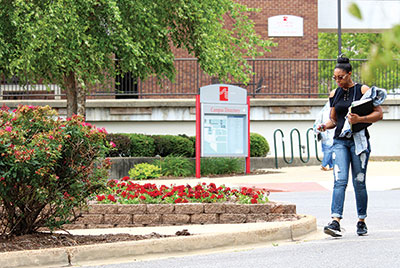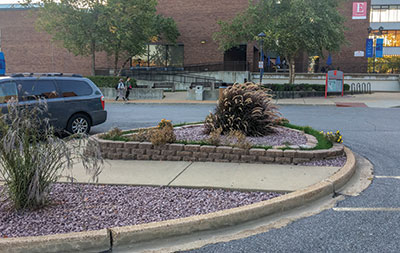
By Jason Ethridge
The Scene staff
Many people have noticed a lack of color on the Forest Park campus this year.
Gone are the flowers filling planters and window boxes. Gone are the mums lining stairs to the staff parking lot. Gone are the bright-red bushes along the cafeteria window.
According to officials, the college is transitioning to a landscaping plan that’s more sustainable, viable and interactive.
“Next year we should have some daffodils, some crocus, some freesia, a little bit of color,” said Facilities Supervisor Wolf Veverka, who came on board last November.
“We all work at this together because, really, the students are our customers. We need to do what we can, in the area we can, to make the school as appealing and attractive as we can.”

Last year, the college laid off former Facilities Manager Dennis Kozlowski, who was known for his green thumb. A private company, Ideal Landscaping, has been hired to mow grass on campus.
These developments led some people to think that attempts to beautify Forest Park had fallen victim to districtwide budget cuts. But that’s not the case, said Interim Provost Julie Fickas.
Some plants were removed because of disease, overgrowth or unsustainability, she said.
Officials aren’t giving up efforts to maintain a campus filled with plant life, Fickas added. They’re just rethinking how to do it.
“They have a master plan,” Fickas said.
One of the main goals of Facilities Manager Josh Dewitte and Veverka, who has a degree in biogeography and environmental sciences, is to create a more sustainable landscape on campus, one that would be more viable with less maintenance.
They still plan to put annuals in flower beds, but they will add more native species and use red granite rock and landscaping cloth instead of mulch.
All of the ash trees on campus will be cut down because of the emerald ash borer, an invasive insect that preys on ash trees, Veverka said.

Forest Park will soon have 41 new trees, including black cherry, black walnut and red mulberry, thanks to Forest ReLeaf of Missouri, a non-profit organization that’s dedicated to restoring and sustaining urban forests. It’s providing the trees at no charge.
“Most every one of the trees we will be bringing in will provide food for both people and animals,” Veverka said.
Once the trees begin producing fruit, students and staff will be welcome to eat it.
Sustainability and viability aren’t the only factors Veverka considered while developing his three-year landscaping blueprint.
“I plan to make the campus more interactive, greenspace-wise,” he said.
A flower bed next to the cafeteria has been planted with chocolate mint that students will be invited to pick at no charge. The same will apply to blue sage in planters between E Tower and the Theater Building.
“We’re trying to put the word ‘community’ back into community college,” Veverka said.
Future projects include creating a butterfly garden on campus with help from Missouri Botanical Garden. It will replace the one planted by faculty and staff near the southwest corner of A tower in 2015.
That butterfly garden was destroyed by construction activity related to the new Center for Nursing and Health Sciences.
“We had to give it up,” said Humanities Department Secretary Mary Kearny. “Forest Park has become kind of a barren place. I hope they have a plan to remedy that.”
Veverka is aware that Forest Park has been more colorful in the past. But he said this has been a bad year for plants; bulbs have been in short supply; and it takes time for native plants to establish themselves.
“What people have to understand is that this is nature,” Veverka said. “It doesn’t just grow overnight.”
